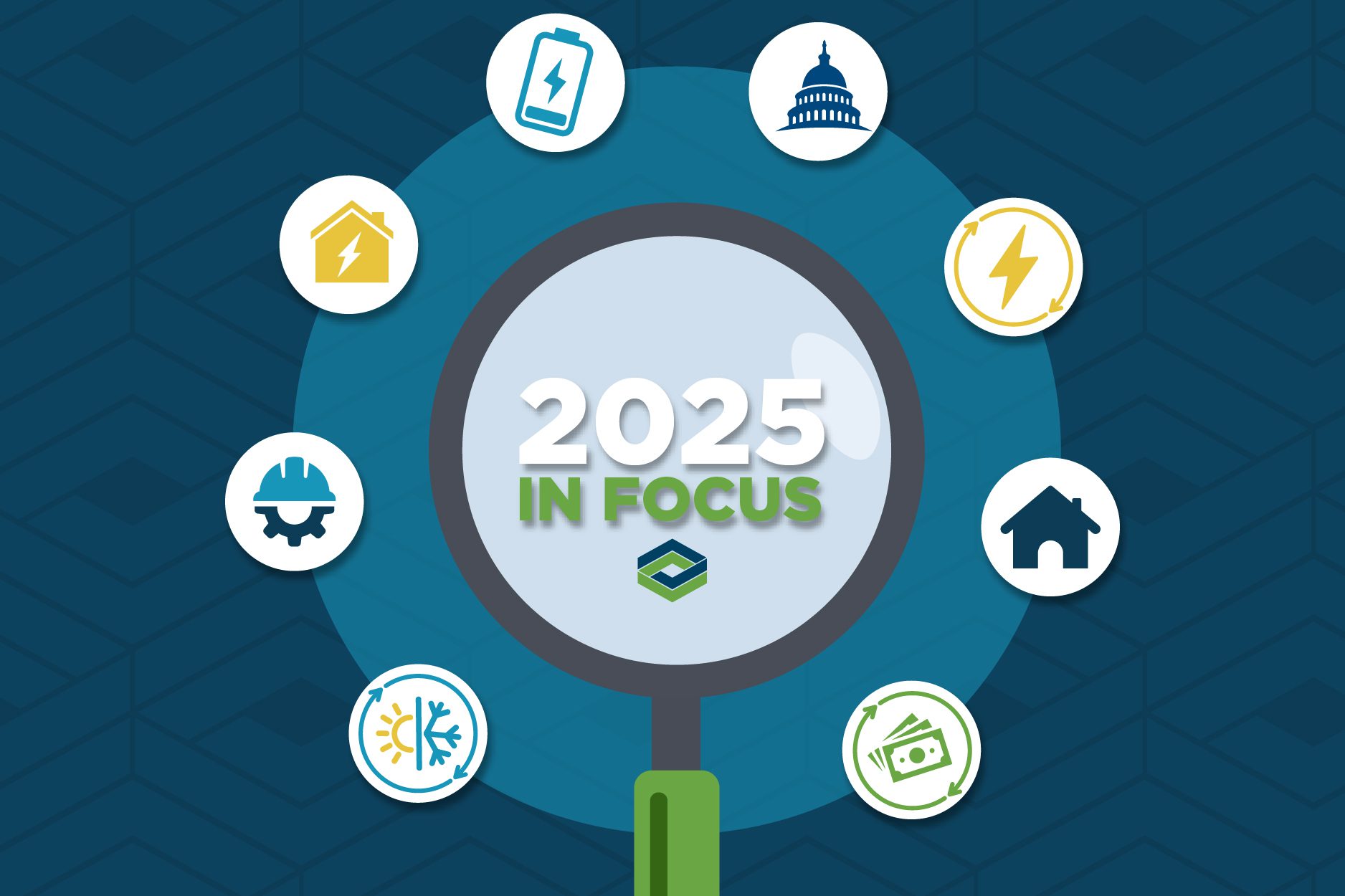Jan 4, 2022
Exploring Rises in Home Energy Prices: Causes and Mitigation
Energy prices have been rising due to supply and demand changes, decreased storage, and maintenance issues. Government assistance programs, renewable energy, and efficiency-enhancing technology can help mitigate cost barriers. Expanding energy assistance programs, mandating stricter reporting on emergency preparedness, promoting weatherization, and installing renewable energy sources can be solutions. Homeowners can also increase efficiency by weatherizing and installing smart systems and appliances.
By: Evelyn Long

Society relies on abundant and reliable energy sources to power our residences and workplaces. Fluctuating energy prices create adverse effects in the residential and commercial sectors. When utility costs rise, many homeowners struggle to keep up with seasonal energy needs and may feel added financial strain when heating, cooling, and powering their homes.
The year 2021 saw notable increases in energy prices, particularly in comparison to the low demand and economic recession of 2020. These changes come from a combination of supply and demand influences. Before assessing mitigation methods for homeowners, performance professionals must explore the direct causes of rising power costs.
Why Are Energy Prices Rising?
There are three driving factors behind the energy price increases. During the COVID-19 crisis, the global demand for oil and gas decreased. As individuals spent more time at home and less traveling, the energy supply expanded.
The supply and demand changes reduced petroleum costs by nearly 48.8% in April 2020. As vaccines began rolling out and individuals returned to work, the global economy experienced a fast post-recession recovery. The demand for oil and gas skyrocketed as transportation rose.
Energy professionals experienced limitations when trying to meet consumers’ demands. During the pandemic, the employment rate declined, pushing back maintenance projects. Last year’s severe winter temperatures also drained the energy storage supply.
The northern hemisphere experienced more below-freezing days than usual, increasing heating, ventilation, and air conditioning (HVAC) system uses. Residential heating increased power consumption by nearly 11% at its peak. The increase in consumption depleted some coal and natural gas supplies, leaving fewer available sources for current consumers.
The decrease in energy storage and poor maintenance practices created a weak power supply. As oil and gas supplies become scarce, their prices increase and cause accessibility challenges. Government assistance programs, renewable energy sources, and efficiency-enhancing technology can mitigate cost barriers.
Expanding Energy Assistance Programs
Qualifying homeowners do have access to energy assistance programs, and they might not be aware that many states are expanding coverage thanks to increased funding from the American Rescue Plan.
The Low Income Home Energy Assistance Program (LIHEAP) helps U.S. residents manage their utility bills. It covers heating and cooling costs to ensure safety during extreme weather occurrences. The government recently increased funding for the program, improving its accessibility for struggling families during this time of economic uncertainty.
Government officials also established the Emergency Rental Assistance Program to cover residents’ outstanding energy bills. It also provides ongoing assistance by preventing shutoffs in family homes. Additional recovery funds help individuals pay their utility bills before losing access to residential electricity supplies.
Finding Solutions to Energy Crises

Energy prices have been in the news a lot this year, thanks both the supply and demand issues and to tragic losses in performance in California and Texas.
This year, during the Texas freeze, nearly 10 million residents experienced power losses. The disaster left individuals with limited access to medical supplies and heating, ventilation, and air conditioning (HVAC) systems. Residents experienced adverse health effects related to freezing temperatures. Tragically, nearly 210 individuals died from complications related to the freeze.
Energy professionals evaluated the devastating effects in Texas and worked to develop solutions for future outages. Some proposals include mandating stricter reporting on emergency preparedness from electricity and natural gas producers. It’s also critical to promote weatherization.
This is a strong solution for many commercial spaces. Installing emergency generators can prevent fatal consequences during disaster-related outages. Residents and business owners may install generators to access abundant energy supplies during brownouts and blackouts. After individuals pay off their initial purchase and installation fees, they can obtain a free supply of power.
Finally, experts examining the crisis determined that renewable energy installations actually outperformed natural gas suppliers in continuity. Renewable energy isn’t a short-term fix for homeowners in need, but the transition is a critical topic of conversation. Not only are economic factors at play, but environmental ones, too—California and Texas weather conditions indicate climate change shocks that will likely continue unless averted.
Renewable energy gives homeowners reason to hope for alternate power sources. Photovoltaic (PV) solar panels still provide the most cost-effective energy supply on the market. The price of solar dropped nearly 65% over the past decade. Researchers expect alternative energy costs to continue decreasing as technology advances. When residents install PV panels, they also reduce their susceptibility to electricity price fluctuations, increasing the predictability of monthly utility costs.
Increasing Efficiency With Weatherization
Home performance professionals know well the positive impact weatherization can have on energy efficiency. In the face of higher energy costs, homeowners can see significant savings from sealing the building envelope and keeping current energy needs from rising—it can even reduce monthly energy bills by 30%, according to Department of Energy (DOE) experts.
This December, DOE has expanded state and local funding for weatherization via the residential Weatherization Assistance Program (WAP). Qualifying projects can receive up to $2 million each to focus on electrification, improve weatherization, and incentivize clean energy technologies.
This represents a significant policy move to focus efforts and funding on home performance and expand the home performance industry in the face of changing energy needs. Experts offering energy-saving home repairs, job programs to encourage interest in the industry, and clean energy installations can learn more about the initiative here.
Increasing Efficiency With Smart Devices
Another mitigation method that actively reduces energy costs is installing smart systems and appliances. HVAC systems, lights, and water heaters use the highest quantities of energy. Cooling alone consumes nearly 236 billion kilowatt-hours (kWh) of power annually.
Smart thermostats can significantly reduce an HVAC system’s energy reliance, increasing its efficiency. The technology uses the internet of things (IoT) to connect temperature control systems, remote controls, and Wi-Fi connections, creating autonomous features. IoT thermostats can access real-time weather predictions, adjusting indoor temperatures to optimize natural patterns.
Relying on organic indoor and outdoor temperature differentiations effectively reduces a system’s energy use. They also increase HVAC efficiency using motion detection sensors. The smart system monitors activity in various zones and adjusts temperatures based on occupancy levels.
Residents can also reduce utility costs by increasing the energy efficiency of indoor illumination with smart lights. The system also uses motion detection sensors to turn the lights off in vacant rooms. Homeowners may additionally control their lighting systems remotely using smartphone applications, increasing convenience and decreasing electricity reliance.
Supporting New Energy Employment Opportunities
As energy prices continue increasing, new employment opportunities may arise. Solar panel manufacturing, distribution, and installation positions will increase as the demand for independent power sources rises. Smart homes are also gaining popularity on the market, further enhancing the need for educated construction and installation professionals.
Navigating Inconsistent Home Energy Prices
The following years will see many more households adopt alternative energy sources as utility prices continue to fluctuate. Fortunately, technology continues to raise the efficiency while lowering the price of fossil fuel alternatives.





